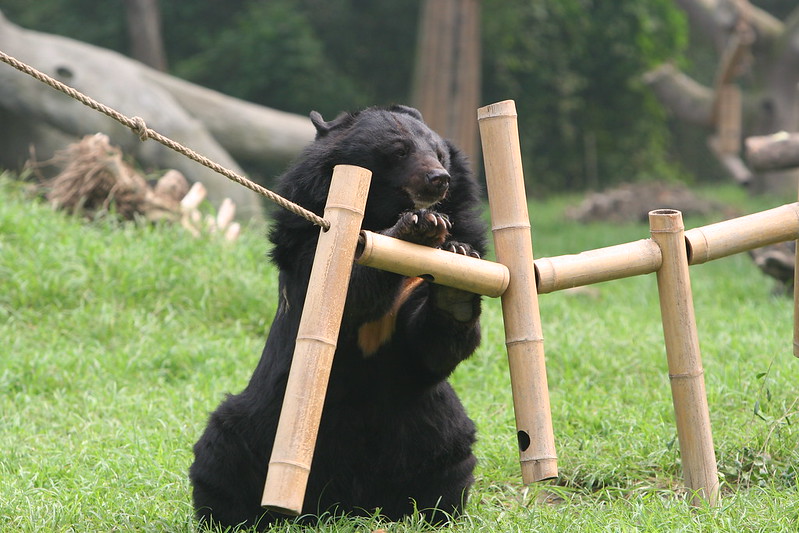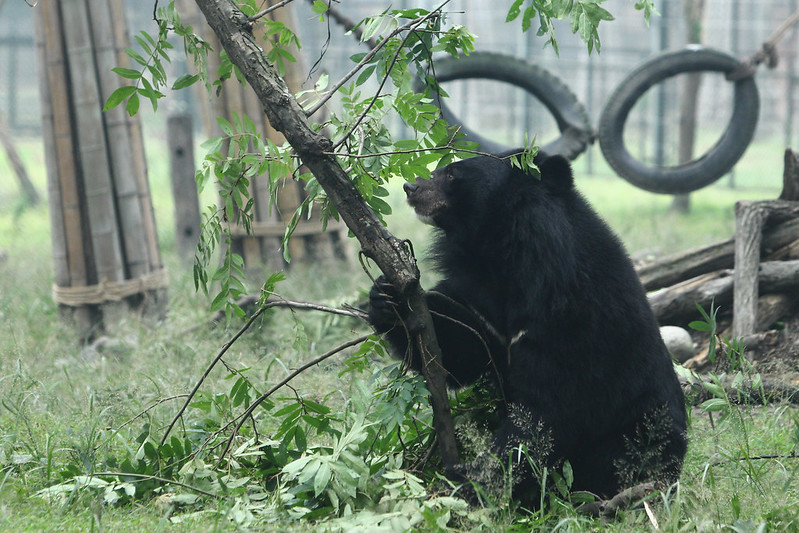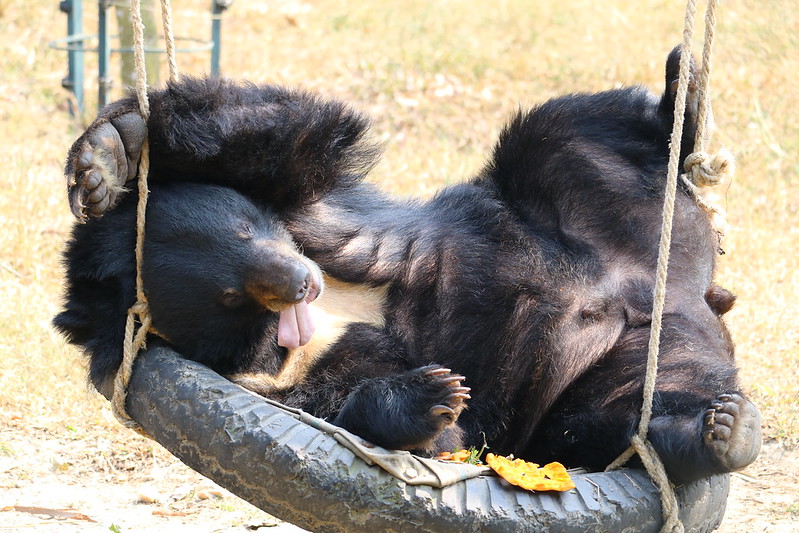#MoonBearMonday: How the lives of rescued bears are enriched over a lifetime of care
14 May 2018
Expressing natural behaviours is as vital to bears in sanctuary as a nutritious diet, a safe sanctuary and a good vet – enrichment matters.
For bears rescued from the bear bile industry, release into the wild is almost never an option.
Most bile farm survivors have spent decades in tiny cells. They have no survival skills, many have been physically mutilated and all are psychologically scarred.
With bears capable of living around 30 years, each bear rescued is a lifelong commitment to give that individual the care they deserve for the rest of their life.
Safety, healthcare and diet are important, but these new lives must also be lives worth living.
To keep the bears mentally stimulated and enjoying each and every day, sanctuary staff prepare a constantly rotating programme of enrichment from unusual tastes, to new toys and even new friends.
Food will often be hidden within puzzle-feeders – natural materials such as bamboo or wood with food hidden within hard to reach holes.
A variety of fresh leaves, known as browse, is provided which bears love to eat, roll in and use to make nests.
The bears’ large outdoor enclosures are packed with fun structures such as swings, swimming pools and platforms – and the team are constantly dreaming up new items which the bears can explore, play with and ultimately have great fun destroying.
Novel sensations are introduced in the form of natural fibre textiles, hessian sacks or even cardboard boxes – anything which is cheap, natural and safe can be turned into a toy.
And of course, in sanctuary the bears have each other. On farms, they are kept isolated in separate cells. They can never play with each other, wrestle or sleep together. But once rescued, Animals Asia has found that relationships with other bears can be a huge part of rehabilitation and enormously helpful for overcoming past traumas.
If you would like to help rescued bears recover from extreme cruelty and give them back the lives they deserve, join Animals Asia with a monthly donation today.
BACK







